Back to Portfolio
Redesigning trash sorting
USchool first course on design practises from a human-centered point of view
There is no standard anywhere in the world for trash sorting. This is a huge problem for consumers because every place even within a walking distance has different labeling systems and ways of sorting trash. As we're more and more concerned with living a more eco-friendly life it becomes challenging to sort the waste we produce while on the go. To tackle this problem we came to understand that there need's to be legislative changes, as well as, a universal labeling system. Examples of working solutions are the standardized hazardous materials labels and nutrition labeling on packages. Why couldn't there also be a system for labeling how the sorting is done for a product? As simple as matching an icon for a trash can. No brains just affordances to help a user make their sorting choice in less than 20 seconds! Cause no one wants to spend minutes reading labels or instructions on trash bins.
"It is difficult for a user to sort trash in public places fast & reliability with current standards."
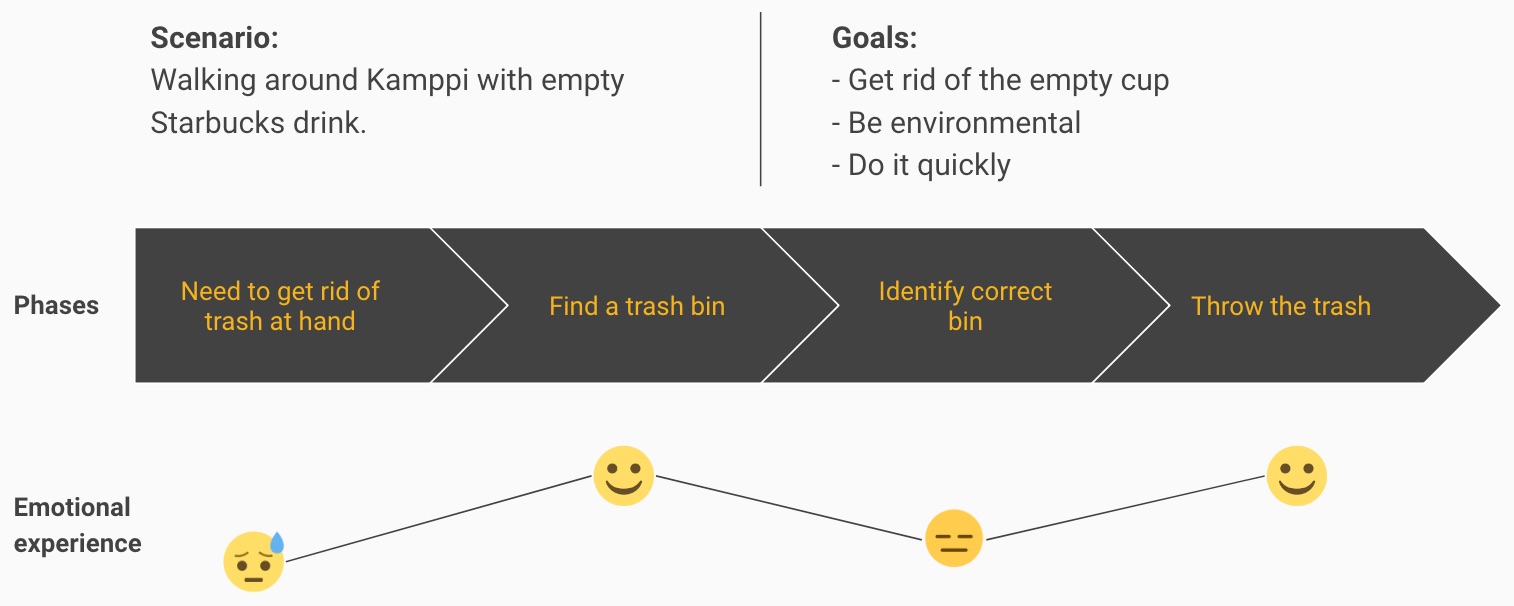
During our user research with empathy maps and value proposition canvases, we realized that people make a less than 50 second choice of choosing a trash bin when in a hurry in public. And if waste is sorted wrong already by the consumer it becomes more problematic for recycling. Worst case trash doesn't get recycled at all but thrown into the landfill! Above you can see a very simple breakdown of a users mood when having to throw away waste in a public place.
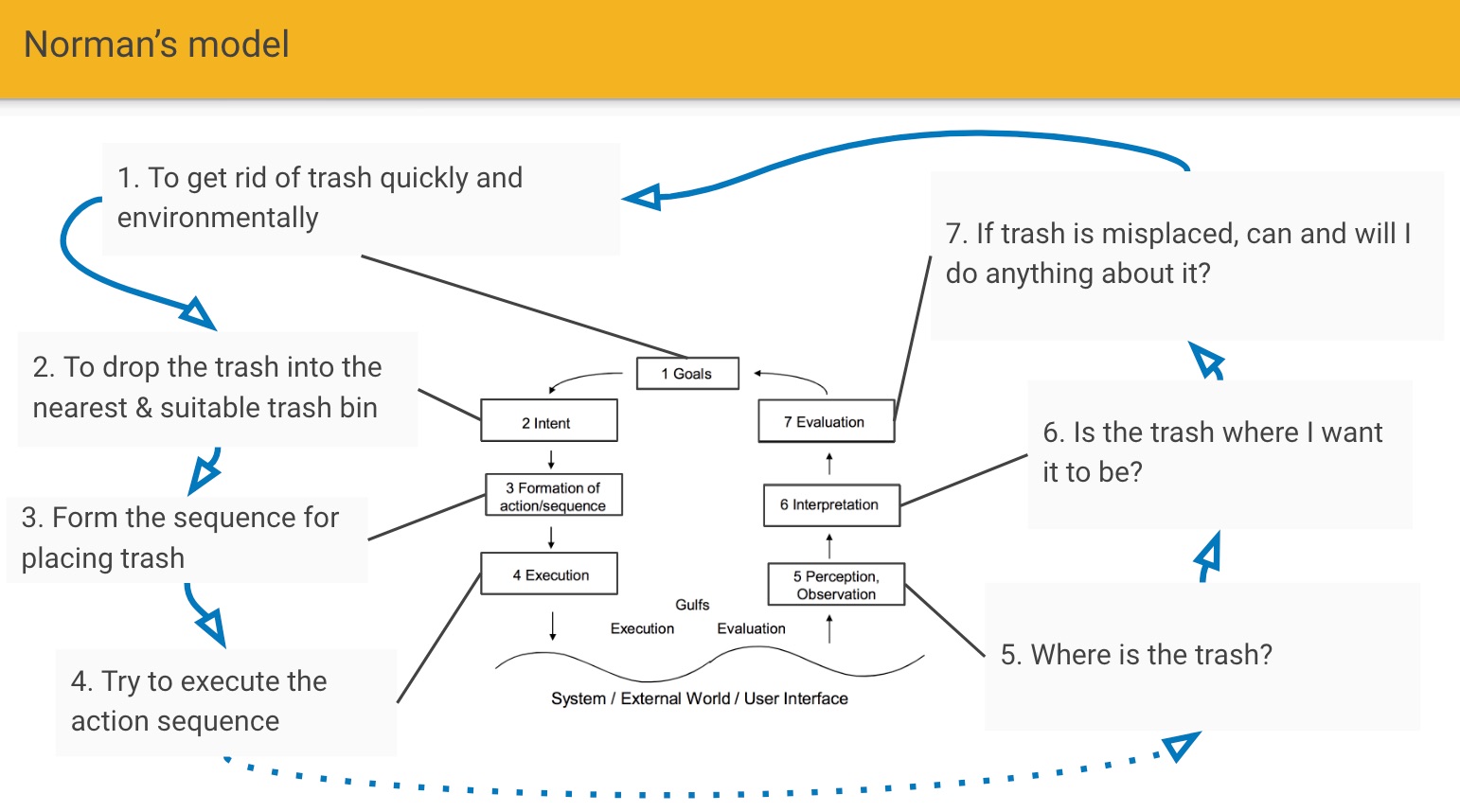
In the above Normans model gave us an idea of where to focus on our problem and to start breaking it down according to what we'd discovered in our user research.
From a cognative standpoint there are two possibilities for not throwing trash in the right bin:
1. not clear which trash bin is the correct one (knowledge)
Example: Difficulty is caused by illogicalities (check out HSY sorting instructions) - Glass mugs don’t go the glass - Biodegradable diapers don’t go to bio2. Problem identify the correct bin from the ones next to it (visual search)
Example: Difficulty is caused by symbols - You may mistake “liquids” as “bottles” if there’s a picture of water bottle. - In some scenarios, the trash icons are too vague.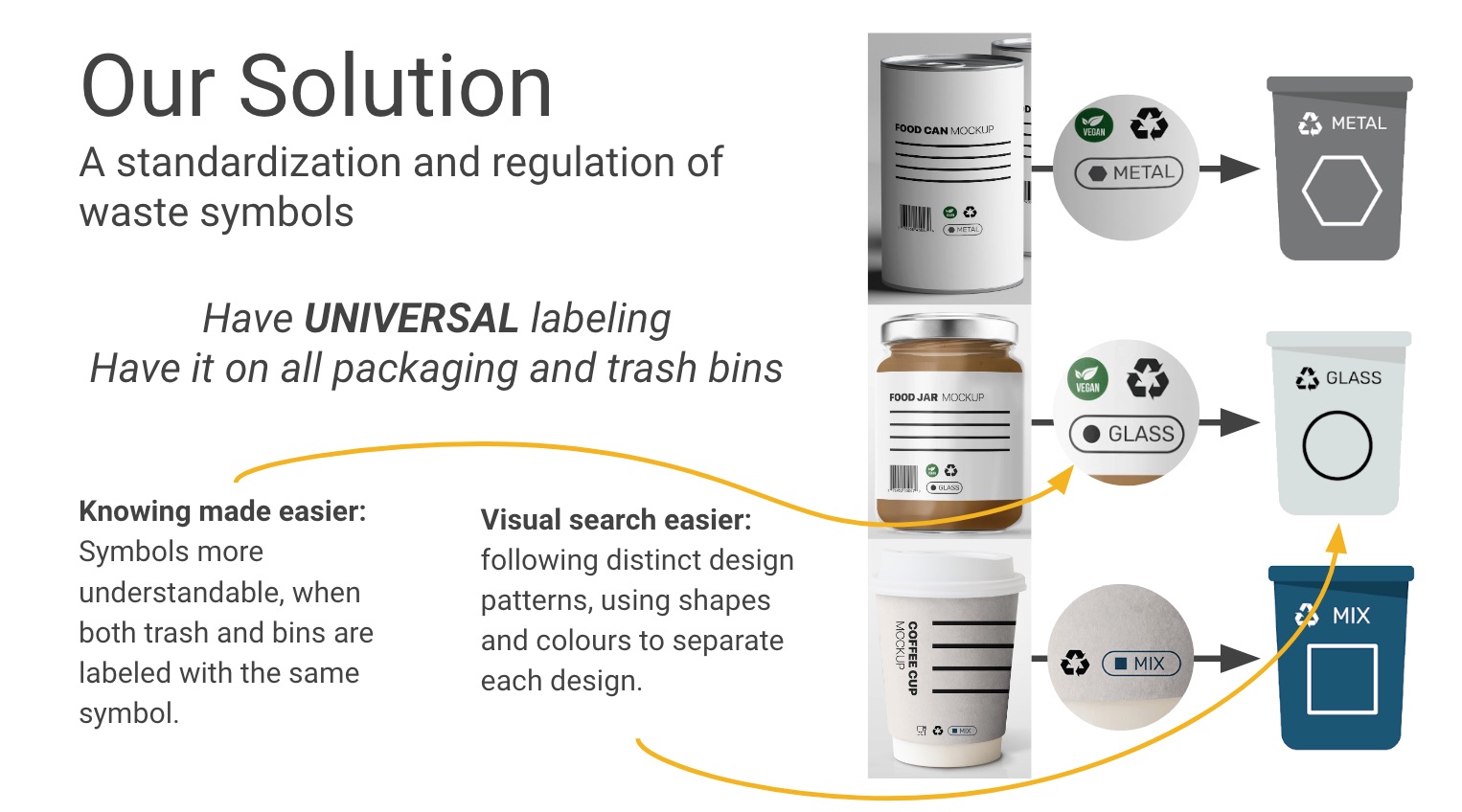
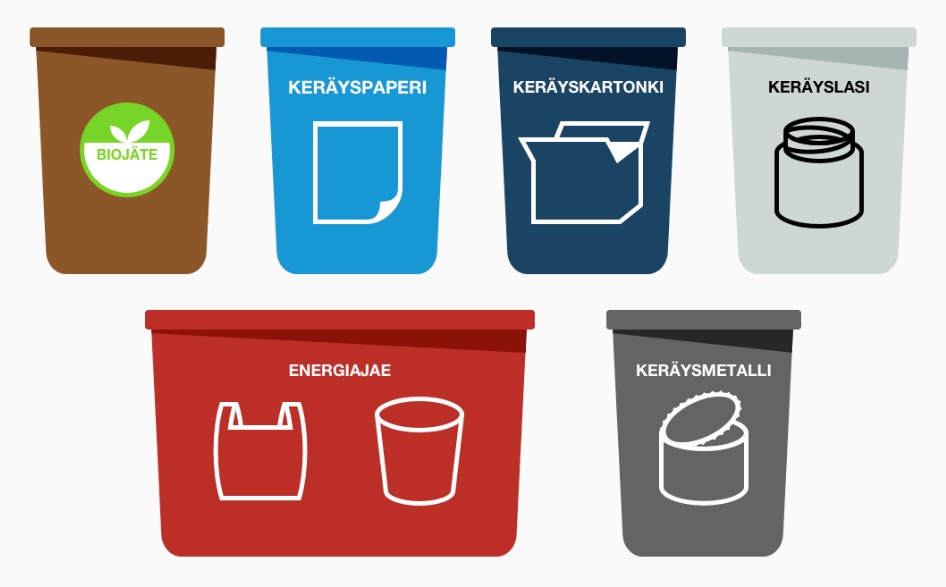
Marketing solution to put all of this together
Sticker anyone? These could be placed on existing packaging (small stickers) and waste bins (big!). They are also good for user testing. And when standardized, companies may apply stickers to existing packaging and bins even before regulation exists.
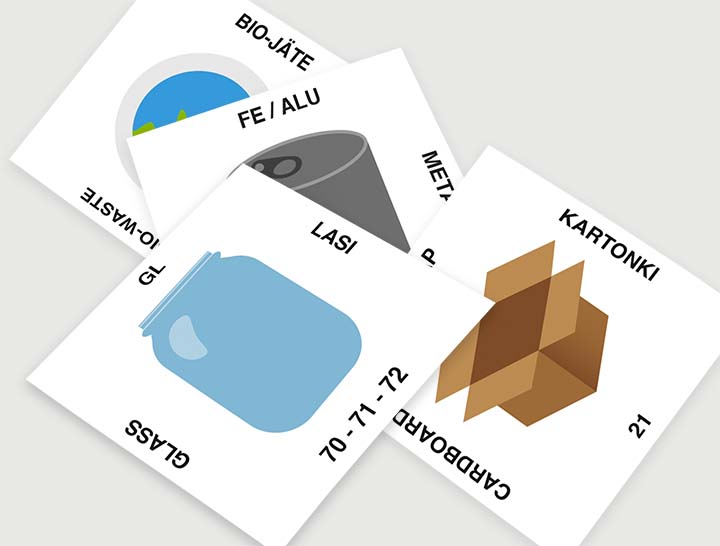
In the group:
Loan Thi Kim Le
School of Science, Information Networks (SCI)
Miska Nurmi
Helsinki University, Cognative Science
Simo Santala
School of Science, Information Networks (SCI)